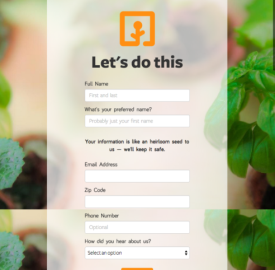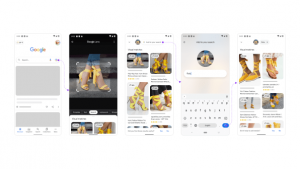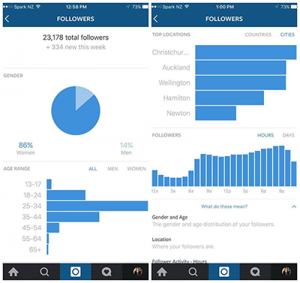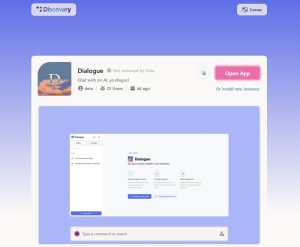Advertising on Google AdWords is a sure-fire way to grow your business online. Businesses make $ 2 in revenue for every $ 1 they spend on AdWords, Google reported.
Despite the prospects, many businesses leave money lying on the table by not employing the right strategies. For many, the presence of too many technicalities is a good enough reason to avoid getting one’s hands dirty with paid search ads.
Whether you’re just starting to give AdWords a thought, or you already have it as a game plan, this article shows you how to improve your Quality Score by optimizing your landing page.
What is a Quality Score?
Simply, a Quality Score is the quantified quality of your ads. Ads are weighed on a scale of 1 to 10 – where 1 is the lowest and 10, the highest .
Quality isn’t perceived; three factors are taken into consideration: landing page experience, expected click-through rate, and ad relevance.
Why you Need to Improve your Quality Score.
An improvement in your quality score may translate to:
- Increase in Ad Rank: A substantial increase in your quality score shoots up your ads in paid search rankings. This comes in handy in boosting visibility and increasing your website’s traffic.
- Reduced Budget: An increased ad rank will most likely tighten your belt with regards your AdWords budget. In this situation, all you’ll need to put in is the least amount of money needed to beat your immediate competitor.
- Positive ROI: Gaining more while paying less will enhance your return on investment. No-brainer.
Follow these tips to optimize your landing page for a better quality score:
1. Reduce Page Load Time
Google loves swift-loading pages, for it assumes that a super fast webpage is less likely to piss off users and more likely to offer a great experience.
Efforts must therefore be made to turbocharge your landing page’s speed. Katharyn Aragon provides a number of ways by which this can be done.
Take a look Google’s Page Speed Insights to better understand what is required of your landing page.
#2. No Deception – Let Landing Page Speak Ad’s Language
At times, users click ads because of a single eye-popping item. Meaning, by repaying their interest with a landing page that bears no resemblance with your ad’s features, you’ll be killing your business.
Your landing page must be structured in such ways as will reflect your ad’s intent.
Magento exemplifies this:

The above ad highlights the major features of Magento’s services. Underneath the features are three calls-to-action. A click on the ad’s title will take you to the following page:

The above landing page is definitely not an unknown zone. It fulfills all expectations triggered by the ad. Hence, it speaks the ad’s language and is a good example.
#3. Make it Responsive and Mobile Friendly
A web developer who isn’t thinking mobile isn’t worth your penny. Google abhors webpages that aren’t optimized for mobile devices. In April 2016, its algorithm was updated to compensate sites perceived as ‘mobile-friendly.’ And, today, mobile friendliness is used in ranking users’ landing page experience.
A mobile-friendly page must be responsive – it should be flexible enough to fit any screen size. To fulfill this requirement, here are some tips on how to create a responsive website.
Also, exclude elements that are likely to degrade your page’s performance and appearance on mobile devices. These include flash, relatively large texts and images, poorly spaced content, and many more.
You can use the Google’s Mobile-Friendly Test Tool, Mobile Usability Report and Hubspot’s Website Grader to measure your website’s mobile-friendliness.
#4. Get Rid of Interstitial Ads:
This is a must-do. Some months back, Google announced its decision to clamp down on sites that display intrusive interstitial and popup ads on mobile devices.

Image Credit: Marketing Land
If you currently use these, now is the time to stop. Being obstinate will make your organic search ranking and Quality Score plummet.
#5. Make it Easily Navigable
Prospects need to navigate your landing page. Make it easy for them.
First off, use a clean and well-arranged layout, with each section serving a specific purpose.
If your landing page is meant to drive conversions, then design a precise opt-in form and call-to-action.
Showing navigation bars is useful only if your landing page is strictly meant to provide information about your business and not drive conversions. This is because, the more the distractions, the more unlikely for a user to complete a form.
In this case, your call-to-actions must be enticing enough to make prospects take the desired action and explore other parts of your website.
If your landing page is meant to inform, then navigation bars should be displayed. This will decrease its bounce rate.
#6. Be Credible And Ask Permission:
Your landing page should look (and be) credible. Where there is a form, make explicit why you need a user’s information, what you’ll do with it and promise privacy.

The above landing page states why users need to fill in their personal information (to “reserve your grove”) and promises security. A good example. Learn from it
Final Thoughts
Managing an AdWords campaign may come off as a herculean task. But, using the right strategies, massive opportunities abound. With the 6 given strategies, your Quality score can be increased. Make the necessary changes, right away.
Digital & Social Articles on Business 2 Community(37)







